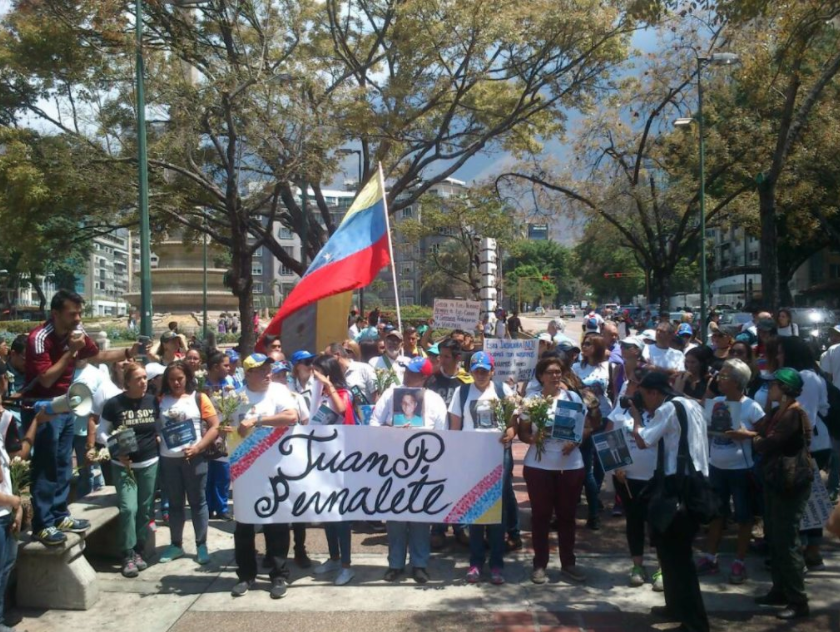On Friday, myself and WOLA Colombia expert Gimena Sanchez spoke with Adam Isacson for the WOLA Podcast, providing an update on our research on Venezuela’s forced migration crisis. I spent all of April in Venezuela and on its borders with Brazil and Colombia, looking at the exodus of Venezuelans, the conditions that are driving so many to flee their country, and the prospects for a peaceful, democratic solution to the crisis. Gimena–who joined me in Colombia–and I are preparing a report on the humanitarian response and the difficulties faced by migrants in both countries, but in the meantime I wanted to post this podcast (audio above), along with some images from my trip (below), to share some of the human stories behind the country’s crisis.

This is at an April 7 rally in Altamira, Caracas, organized by the families of youths killed by security forces during the wave of protests last year. I spoke with three mothers of the victims, and all of them were deeply critical of the government, its abuse of power, and its violations of Venezuelans’ basic human rights. But when I asked why we haven’t seen the same level of mobilization since last year, each one independently mentioned the government’s repressive response to the protests as only part of the answer. Another factor, for them, was the lack of coordination in the opposition. Each of them expressed strong criticism of the MUD’s leadership, with one woman telling me–within earshot of Lilian Tintori, in the above image–that she believed the opposition leadership is more interested in its own political future than resolving the crisis. Indeed, polls show that while the vast majority of Venezuelans oppose the government, the MUD has seen its approval ratings fall to between 20 and 30 percent. In fact, recent polling has shown that roughly two-thirds of Venezuelans are opposed to the MUD’s strategy of calling for an electoral boycott.

This is the view from the Simon Bolivar International Bridge that connects Cucuta, Colombia with San Antonio del Tachira, Venezuela. The UN Refugee Agency estimates that as many as 4,000 Venezuelans cross into Colombia each day, and this figure is easy to believe when standing on the bridge. The scene is a flurry of movement, with hundreds of people standing around carrying suitcases and luggage, seeking taxis and buses that will take them into Colombia or further along their journey, in many cases to the Ecuadorean border and farther south, into Peru or the Southern Cone.
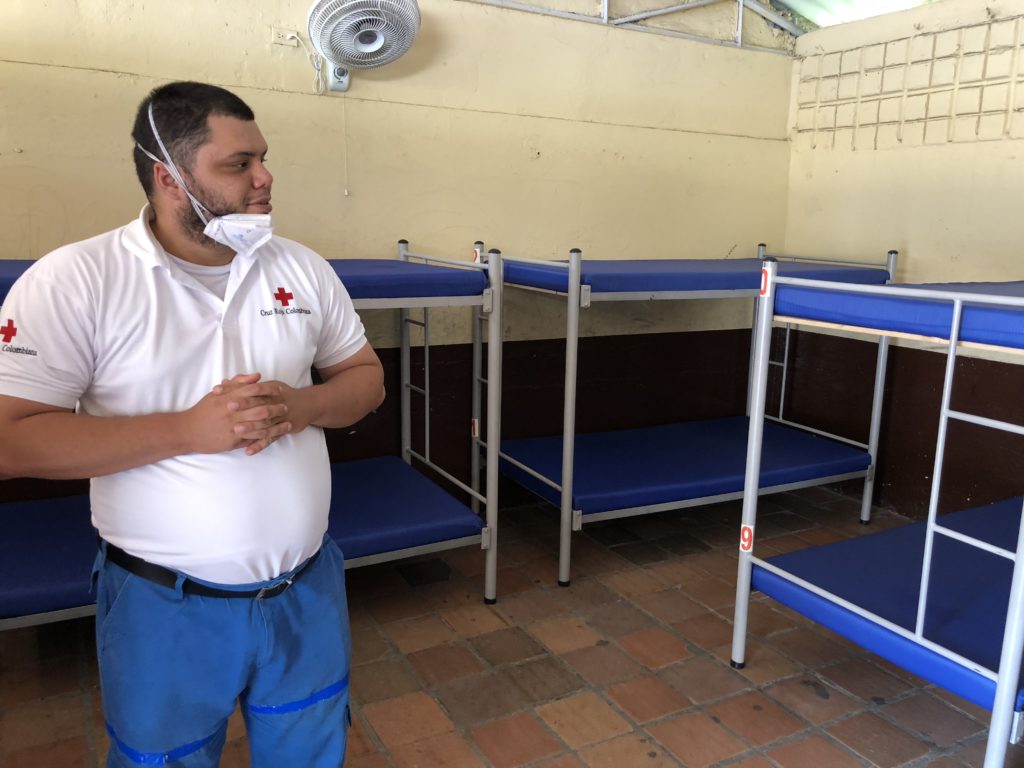
Despite the fact that the Colombian government says there are now over one million Venezuelans in the country–and tens of thousands of them are believed to be in Cucuta–authorities have opened only one shelter in the city, which is being coordinated by the Red Cross. The move was applauded by the international community, but the reality is that it is only open to Venezuelans who cross into the country with all of their papers in order and have proof that they are traveling further. Since new restrictions were announced in February, Venezuelans can now only enter Colombia with valid passports. Because corruption and paper shortages have made obtaining a passport in Venezuela prohibitively expensive, the vast majority enter Colombia as undocumented migrants. As a result, this shelter has been largely empty since its opening (hence the empty bunks), even as thousands of Venezuelans working in the informal sector in Cucuta are sleeping in the streets or crowded into cheap residences with other migrants.
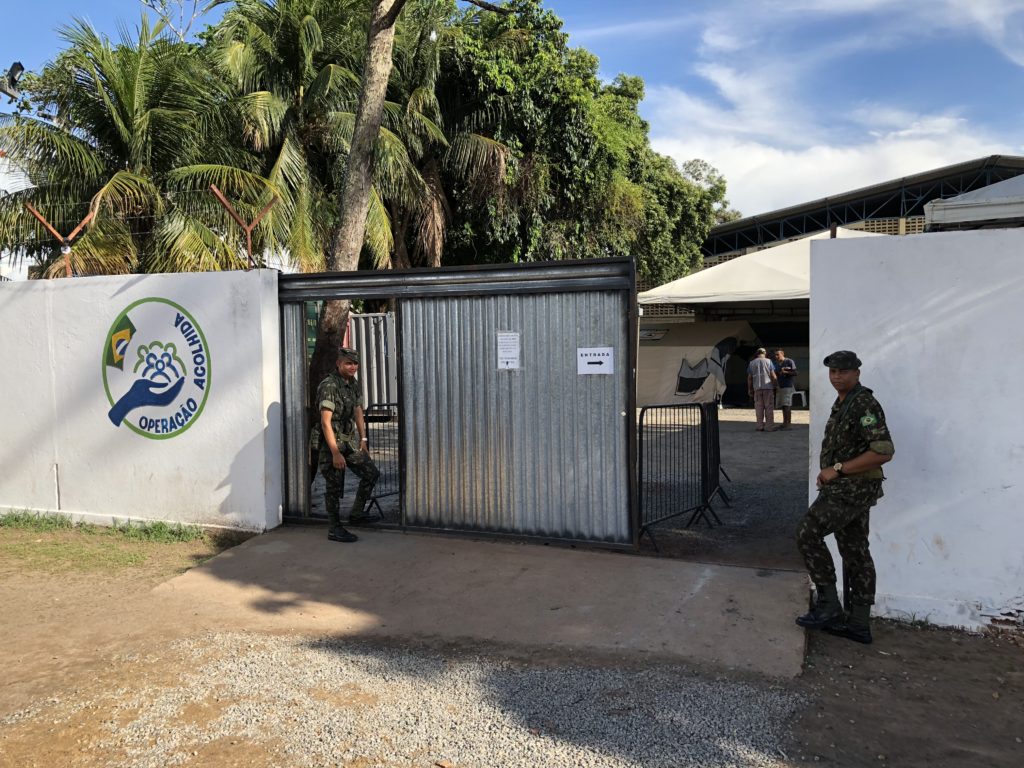
Brazil’s response, by contrast, has been more positive. Venezuelans can still enter Brazil with just a cedula (a national ID card), and it is far easier to seek residency or formal refugee status in Brazil than in Colombia. On the border, the Brazilian government has opened five shelters (like the one in this picture) in the city of Boa Vista and two more directly on the border in Pacaraima. They are slated to open four more by the end of May. However, human rights groups are critical of Brazil’s reliance on the armed forces as the main coordinators of the national government’s response. While the army has an impressive logistical capacity, critics argue that soldiers should not be coordinating the humanitarian response directly, nor tasked with security at the shelters.

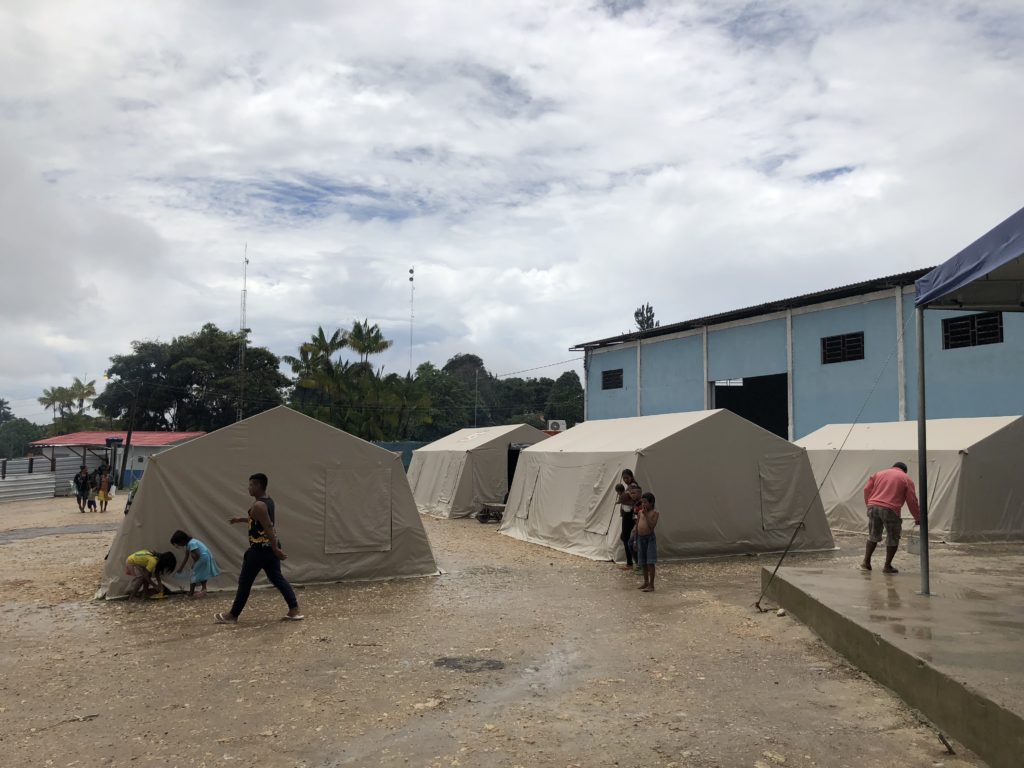
The above two shelters are the two reserved for indigenous Venezuelans. As the New York Times recently reported, the indigenous Warao people have been particularly hard hit by the country’s health and economic crisis, and many have fled to Brazil from the Orinoco Delta. Both the shelter in Boa Vista (above), and the one in Pacaraima (below) are currently at their full capacity, providing food, shelter and medical care to roughly 500 indigenous Venezuelans each. 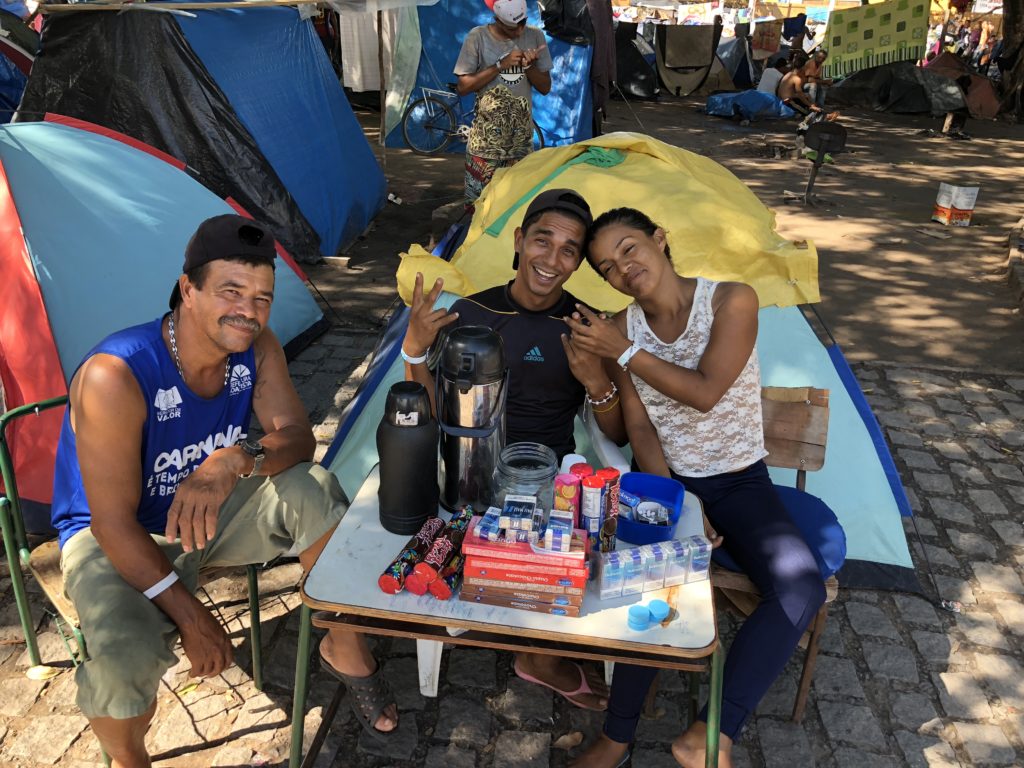
The stories of the Venezuelans I met were heart-wrenching, and provided a sense of scale of the country’s economic crisis. People have seen their savings wiped out by hyperinflation, are struggling to afford basic goods, and are dying because of a lack of affordable medication. Nevertheless, every migrant I met gave off such a powerful sense of resilience, because in so many cases they are subjecting themselves to hardships to send money to relatives back in Venezuela. This group–a father, his son and his girlfriend–in Boa Vista are sleeping in a makeshift tent city in a park (ironically named the Simon Bolivar Plaza) with no running water or bathrooms. “I never thought I would be living in these conditions,” said the son, who worked as a waiter in El Tigre before the economic crisis. But, holding up a one Real coin to me, he noted how that alone could provide relatives back home with Harina P.A.N. corn flour for several days.
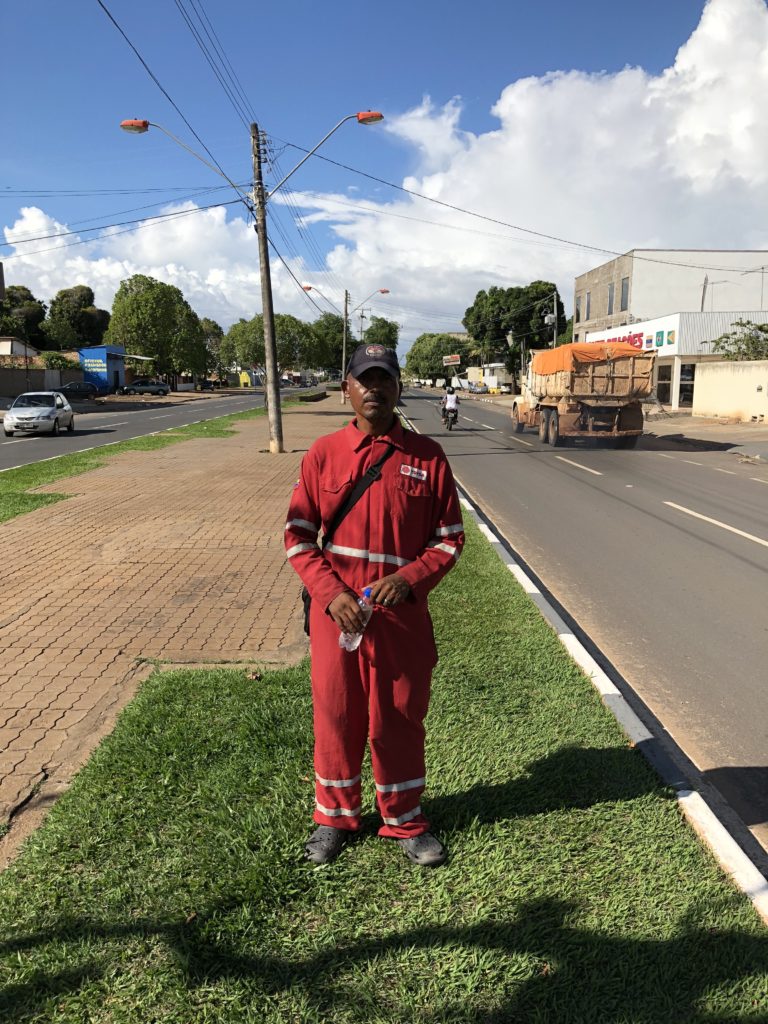
Another example of resilience in the face of hardship: I met this 45 year-old Venezuelan man who told me that, until three months ago, he worked as a technician in Venezuela’s state-owned PDVSA oil company (hence the uniform). He left for Brazil because he couldn’t make ends meet on his salary. Now he sleeps in the Simon Bolivar Plaza, and makes more money per week by selling limes on the street to passing motorists. He’s even able to send money back to support his family in Anzoátegui.

